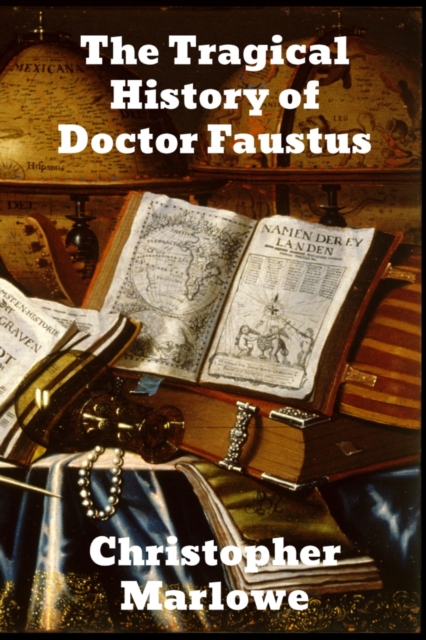
The Tragical History of Doctor Faustus Paperback / softback
by Christopher Marlowe
Paperback / softback
Description
The Tragical History of the Life and Death of Doctor Faustus, commonly referred to simply as Doctor Faustus, is an Elizabethan tragedy by Christopher Marlowe, based on German stories about the title character Faust. It was written sometime between 1589 and 1592, and might have been performed between 1592 and Marlowe's death in 1593. Two different versions of the play were published in the Jacobean era, several years later.
The powerful effect of early productions of the play is indicated by the legends that quickly accrued around them—that actual devils once appeared on the stage during a performance, "to the great amazement of both the actors and spectators", a sight that was said to have driven some spectators mad.
The play may have been entered into the Stationers' Register on 18 December 1592, though the records are confused and appear to indicate a conflict over the rights to the play. A subsequent Stationers' Register entry, dated 7 January 1601, assigns the play to the bookseller Thomas Bushnell, the publisher of the 1604 first edition. Bushnell transferred his rights to the play to John Wright on 13 September 1610.
The two versions
Two versions of the play exist:
The 1604 quarto, printed by Valentine Simmes for Thomas Law; this is usually called the A text. The title page attributes the play to "Ch. Marl.". A second edition (A2) of first version was printed by George Eld for John Wright in 1609. It is merely a direct reprint of the 1604 text. The text is short for an English Renaissance play, only 1485 lines long.
The 1616 quarto, published by John Wright, the enlarged and altered text; usually called the B text. This second text was reprinted in 1619, 1620, 1624, 1631, and as late as 1663. Additions and alterations were made by the minor playwright and actor Samuel Rowley and by William Borne (or Birde), and possibly by Marlowe himself.
The 1604 version was once believed to be closer to the play as originally performed in Marlowe's lifetime, simply because it was older. By the 1940s, after influential studies by Leo Kirschbaum and W. W. Greg, the 1604 version came to be regarded as an abbreviation and the 1616 version as Marlowe's original fuller version. Kirschbaum and Greg considered the A-text a "bad quarto", and thought that the B-text was linked to Marlowe himself. Since then scholarship has swung the other way, most scholars now considering the A-text more authoritative, even if "abbreviated and corrupt", according to Charles Nicholl.
The 1616 version omits 36 lines but adds 676 new lines, making it roughly one third longer than the 1604 version. Among the lines shared by both versions, there are some small but significant changes in wording; for example, "Never too late, if Faustus can repent" in the 1604 text becomes "Never too late, if Faustus will repent" in the 1616 text, a change that offers a very different possibility for Faustus's hope and repentance.
Information
-
Item not Available
- Format:Paperback / softback
- Pages:82 pages
- Publisher:Binker North
- Publication Date:16/11/2019
- Category:
- ISBN:9781989743782
Other Formats
- Paperback / softback from £4.99
- PDF from £5.82
- Hardback from £9.99
- Paperback from £12.15
- EPUB from £3.95
Information
-
Item not Available
- Format:Paperback / softback
- Pages:82 pages
- Publisher:Binker North
- Publication Date:16/11/2019
- Category:
- ISBN:9781989743782






